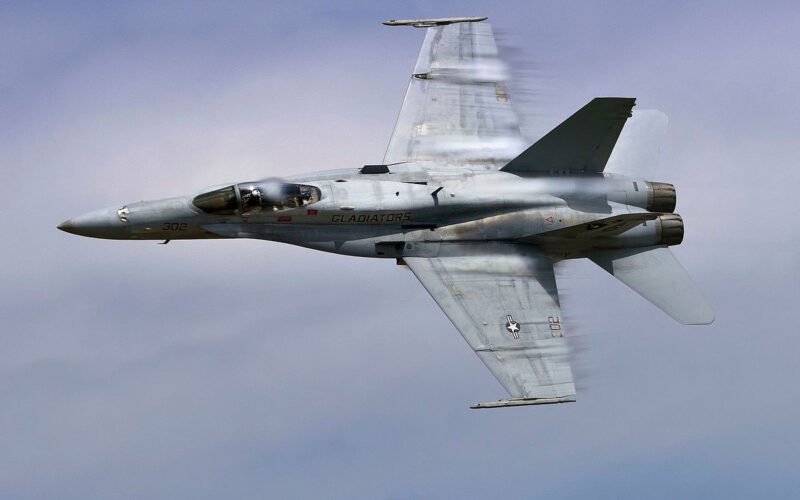The last US Navy F/A-18C Hornet made its official final active-duty flight at Naval Air Station Oceana on October 2, 2019, marking the official retirement from active duty for the aircraft within the Navy.
During its entire 31-year service life, the Legacy Hornet number 300 had been part of the Strike Fighter Squadron 106 also known as the “Gladiators” at Cecil Field, Florida. For that last flight, the fighter jet that completed its first acceptance check flight in 1988 was operated by Lieutenant Andrew Jalali, also born in 1988, the Navy says. It took off from Naval Air Station Oceana in Virginia and was escorted by three F/A-18F Super Hornets for a one-and-a-half-hour flight. The aircraft will now be stripped of all its usable parts and be scrapped.
Captain Brian Becker, Commodore of the Strike Fighter Wing Atlantic, praised the service of the aircraft in the Navy. “Its technological innovation was continued on the F/A-18 E/F/G aircraft and helped the U.S. Navy transition from 4th to 5th generation aircraft,” he said.
Now that the Navy F/A-18A/C Hornets have been replaced by the F/A-18E/F Super Hornets, about 50 of the fighter jets were transferred from the Strike Fighter Squadron 106 to various Navy Reserve and U.S. Marine commands. The reserve should use it as an adversary aircraft during training while the Marine Corps will fly it until the F-35B Joint Strike Fighter comes as a replacement, around 2030.
Some surplus Hornets have also joined the famous “Boneyard” of Davis–Monthan Air Force Base in Tucson, Arizona, where they are preserved, ready to be reactivated if needed.

